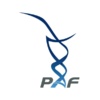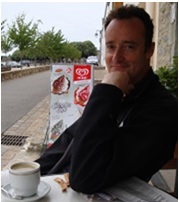Rapporto finale – Può 2024
Ken Maclean, Dottorato di Ricerca, Università del Colorado Denver
“Trattamento di chaperone chimico per ripristinare l'attività degli enzimi nelle mutazioni pieghevoli della carbossilasi propionil-Co-A: Verso una strategia terapeutica personalizzata nell'acidemia propionica (PA)"
Propionico acidemia (PA) (MIM 606054), is a serious life-threatening disease that typically occurs in the early period of birth. Individuals with PA exhibit protein intolerance, vomito, failure to thrive, letargo, and profound metabolic acidosis
sintomi. This disease can result in mental retardation and without treatment, death can occur quickly, due to, infection, heart problems, or brain damage. There is a pressing need for improved treatments for PA.
PA is caused by mutation in an enzyme called propionyl-CoA carboxylase (PCC) This enzyme consists of two non-identical subunits, α and β, encoded by two different nuclear genes, called PCCA and PCCB.
We observed that a number, but not all, delle mutazioni dei pazienti nel gene PCCB generano un'attività minima rilevabile del PCC a causa dell'effetto di tale mutazione sulla capacità di tale proteina di assemblarsi e ripiegarsi correttamente. Se la proteina non raggiunge la sua forma corretta, non può funzionare correttamente e quindi causa PA. Abbiamo proposto di utilizzare una serie di strategie per vedere se potevamo ripristinare l'attività del PCC aiutando quella proteina a superare la sua mutazione e a ripiegarsi correttamente. L'idea era che se ripristinassimo la forma delle proteine, riacquisterà la sua funzione e l'attività del PCC potrà essere ripristinata. Per fare questo, abbiamo trattato le cellule batteriche che esprimono le proteine mutanti PCC con una gamma di sostanze chimiche diverse chiamate “Chaperones”. Queste sostanze chimiche hanno la capacità di aiutare alcune proteine mutanti a ripiegarsi nella forma corretta e quindi a far funzionare nuovamente una proteina “rotta”..
In questo progetto abbiamo proiettato 32 diversi accompagnatori chimici candidati in un intervallo di concentrazioni e sono stati in grado di identificare 4 candidates that were capable of at least partially rescuing PCC enzyme activity in our bacteria different PCCB folding mutant proteins.
Two of these chemicals were able to fix the mutant proteins to the point that their activity was essentially normal. in our bacterial system. We then tested these chemicals in PA patient derived skin cells grown in our lab, that carry the R165W mutation in PCC. Without treatment, these cells do not show any PCC activity. Both of these chemicals were able to significantly rescue the function of the R165W PCC mutant protein to the point that it had between 50 to 60% of the activity seen in normal skin cells. If we were able to restore this level of PCC activity in patients, it is highly likely that most of the clinical problems of PA would be prevented. Subsequent work in our lab found that this effect can also be achieved by inducing natural chaperone proteins in the skin cells and that the accumulation of badly folded PCC protein hurts the cell and is likely to be contributing to some of the clinical problems in PCC.
Collectively, our work opens up a new way of looking at some specific forms of PA and indicates a new possible line of therapy for this neglected condition. This work would not have been possible without the support of the Propionic Acidemia Foundation, and we sincerely thank everyone who has contributed to this fund.

